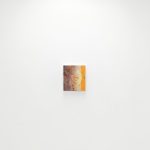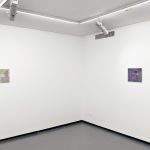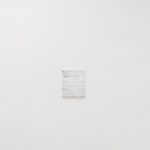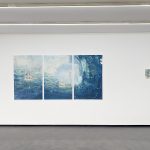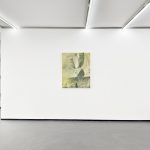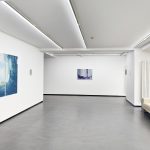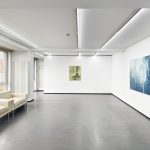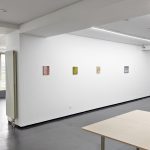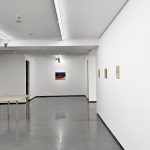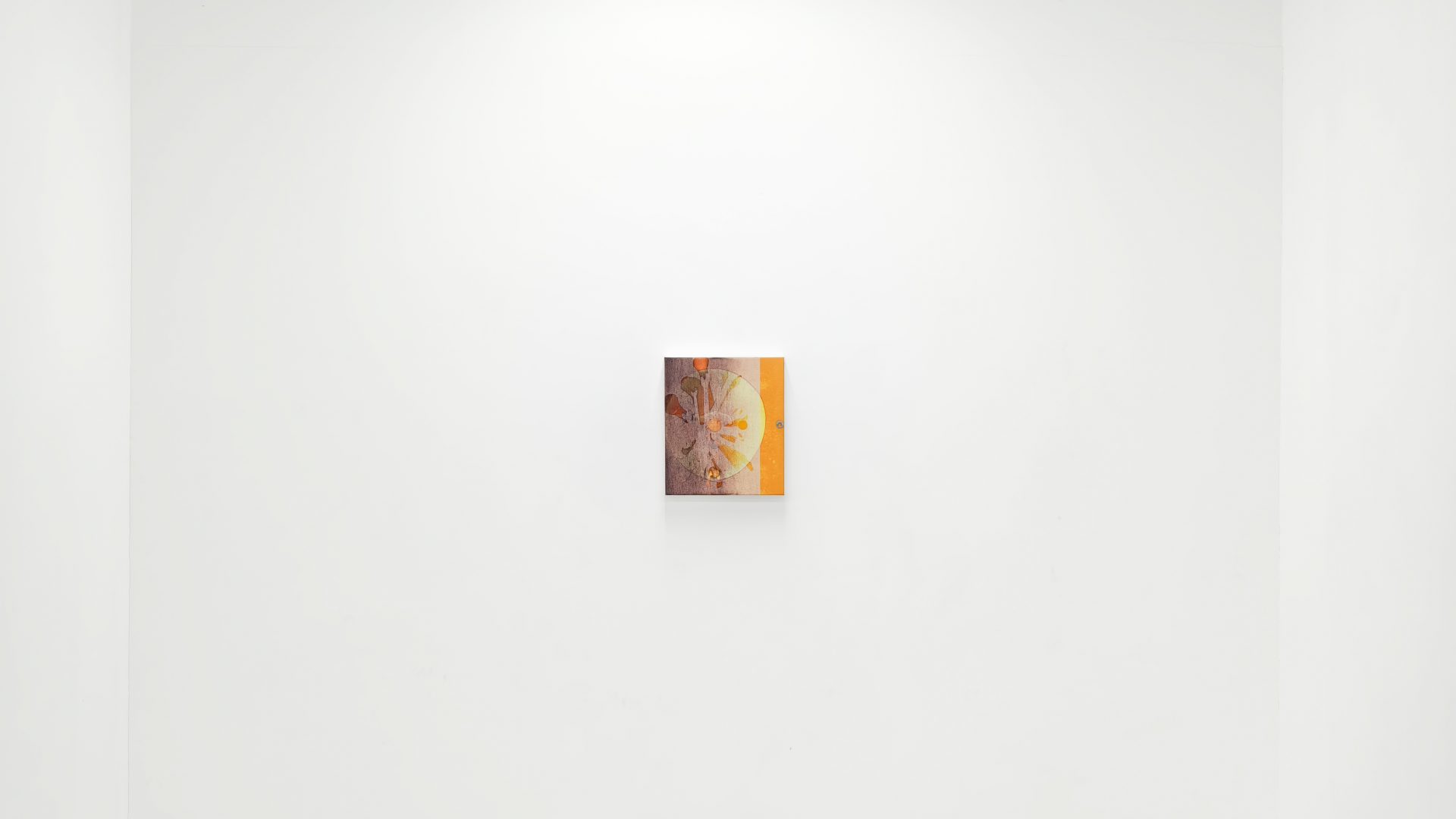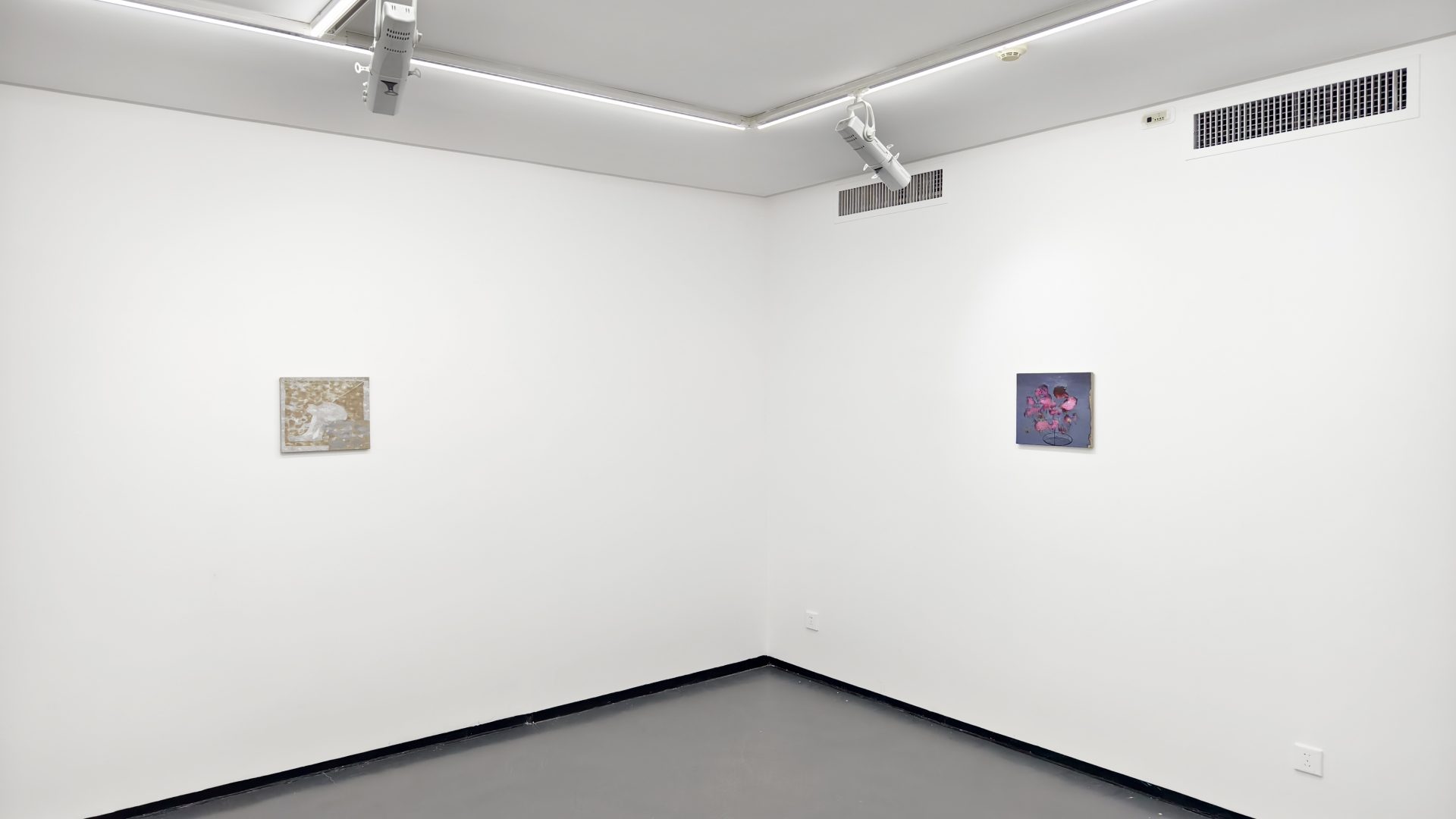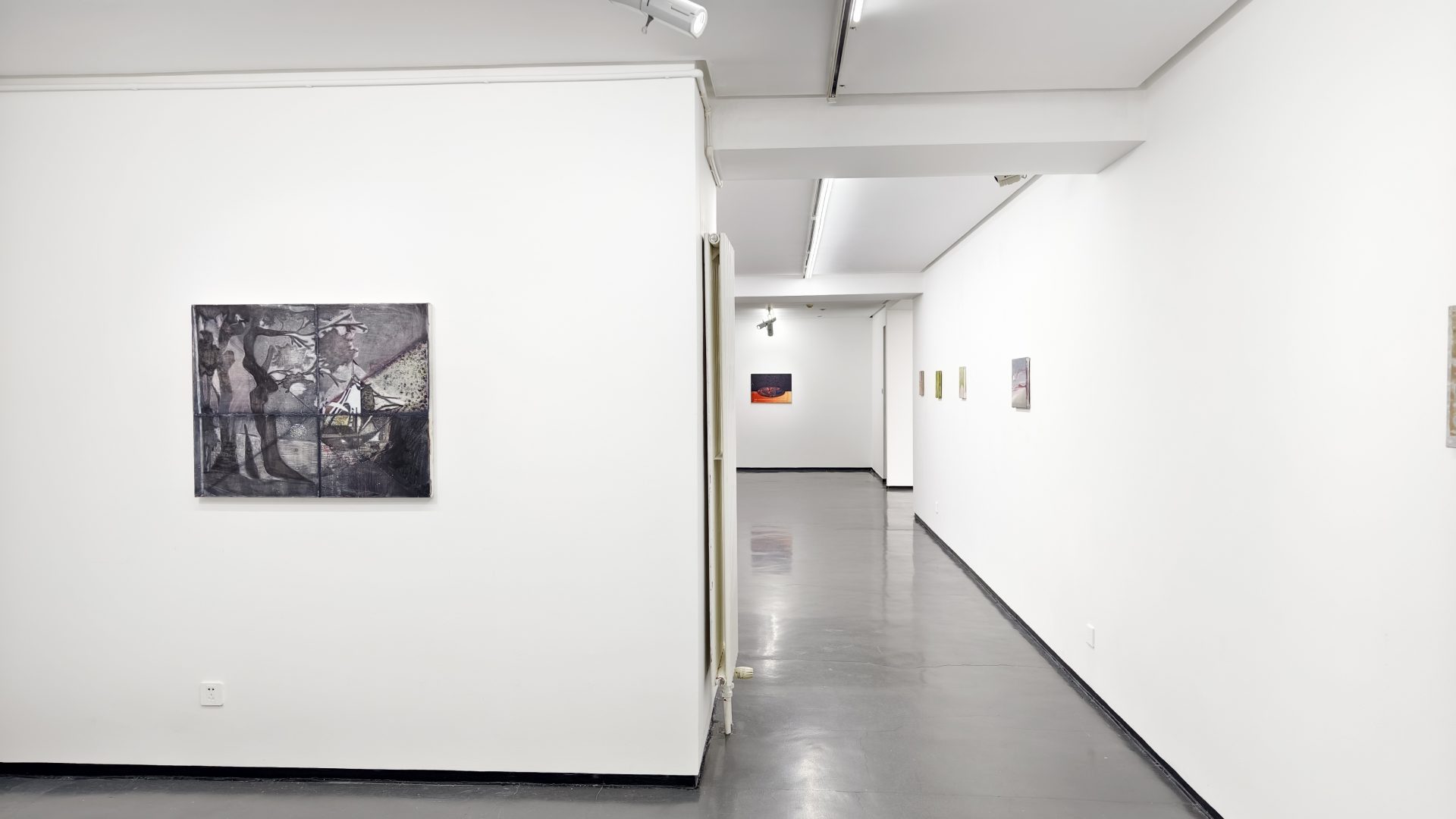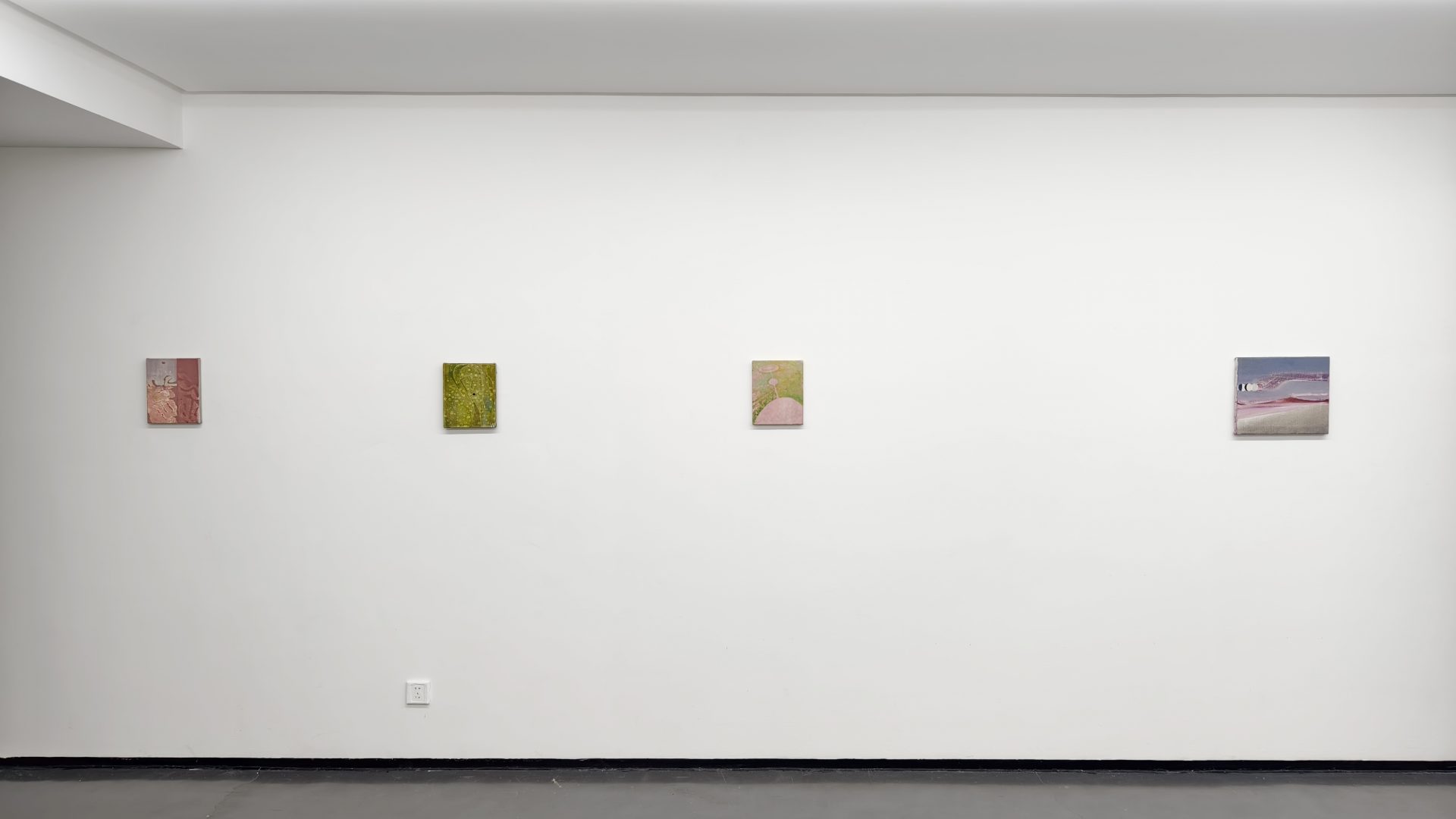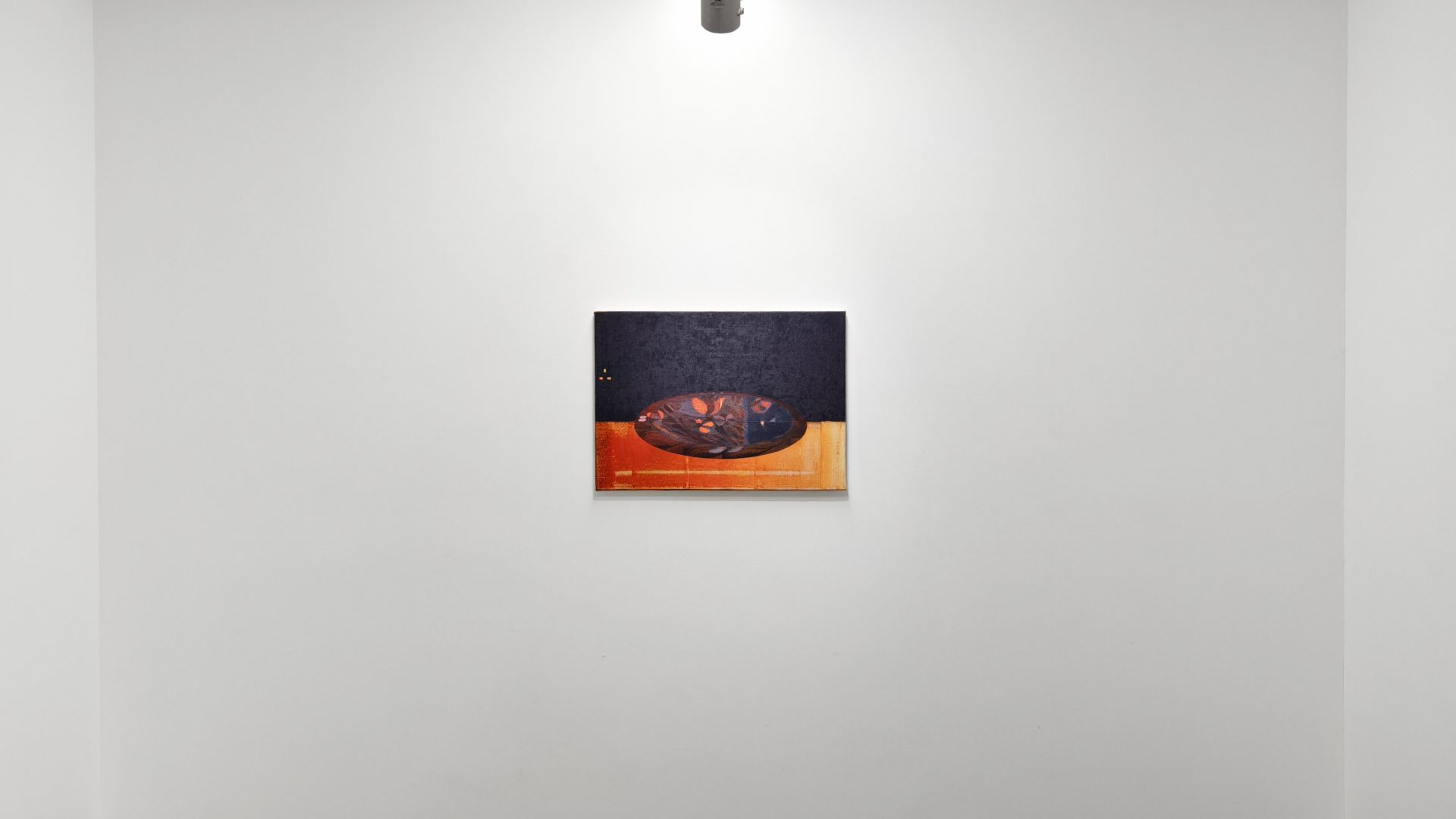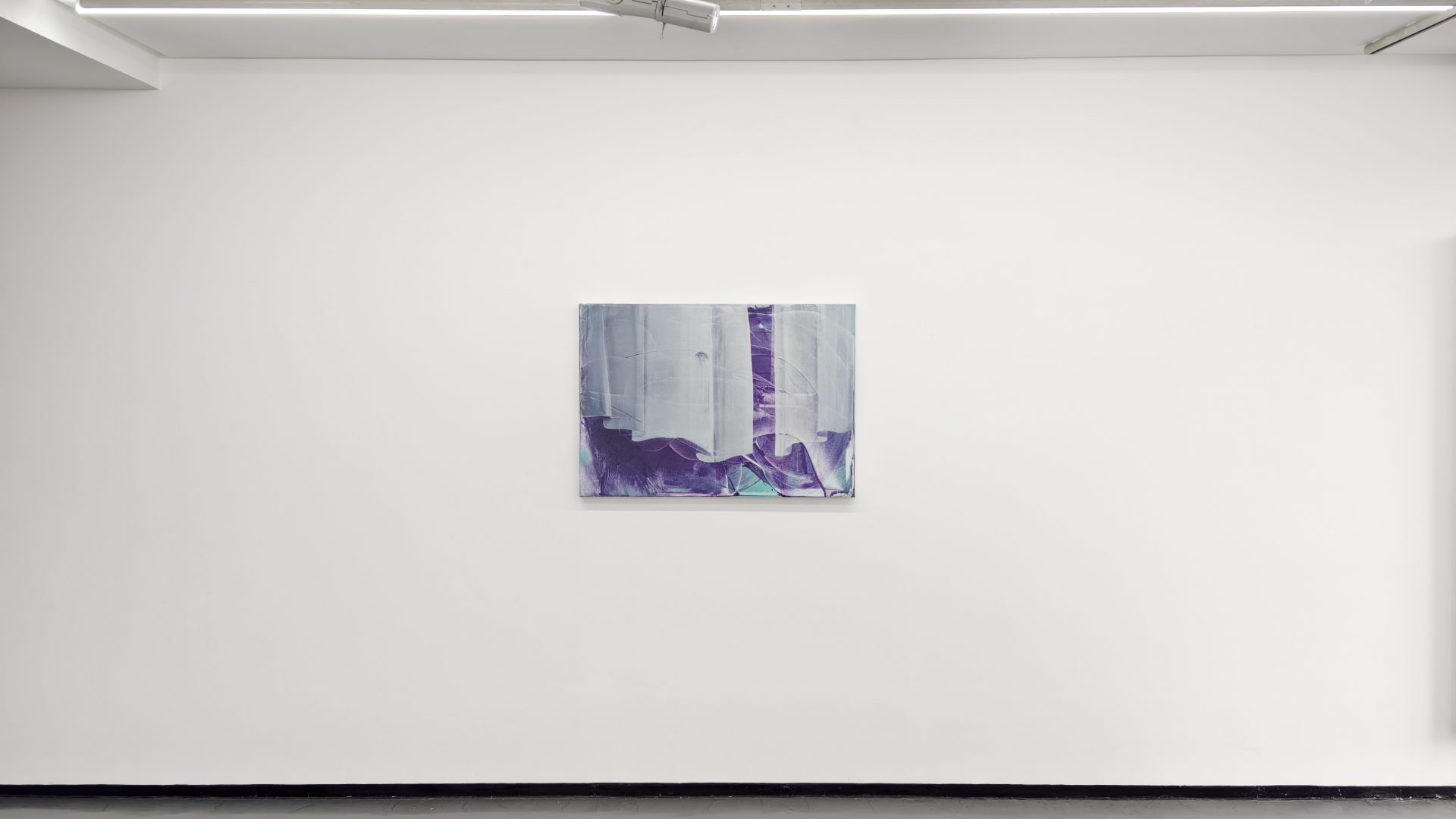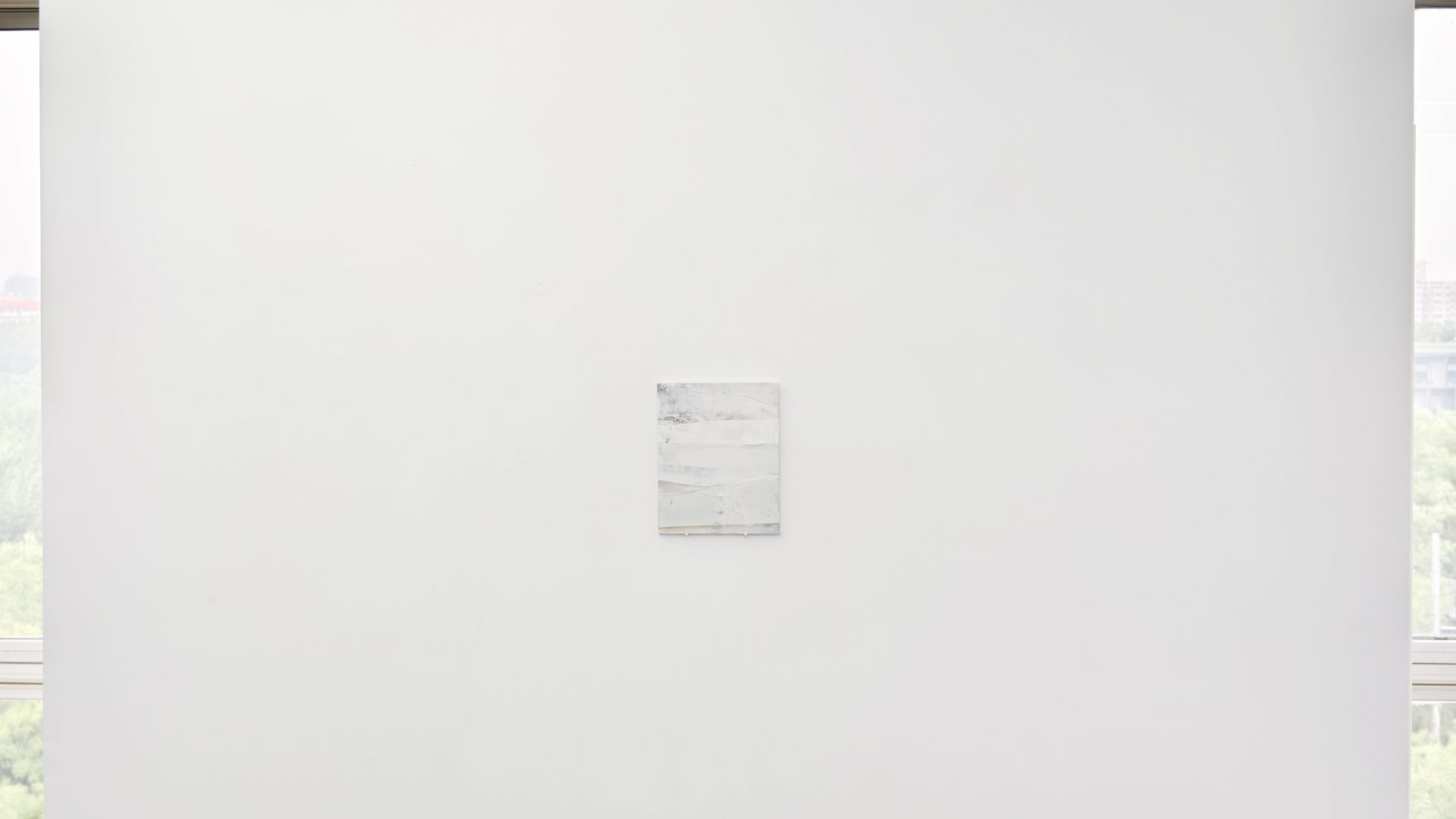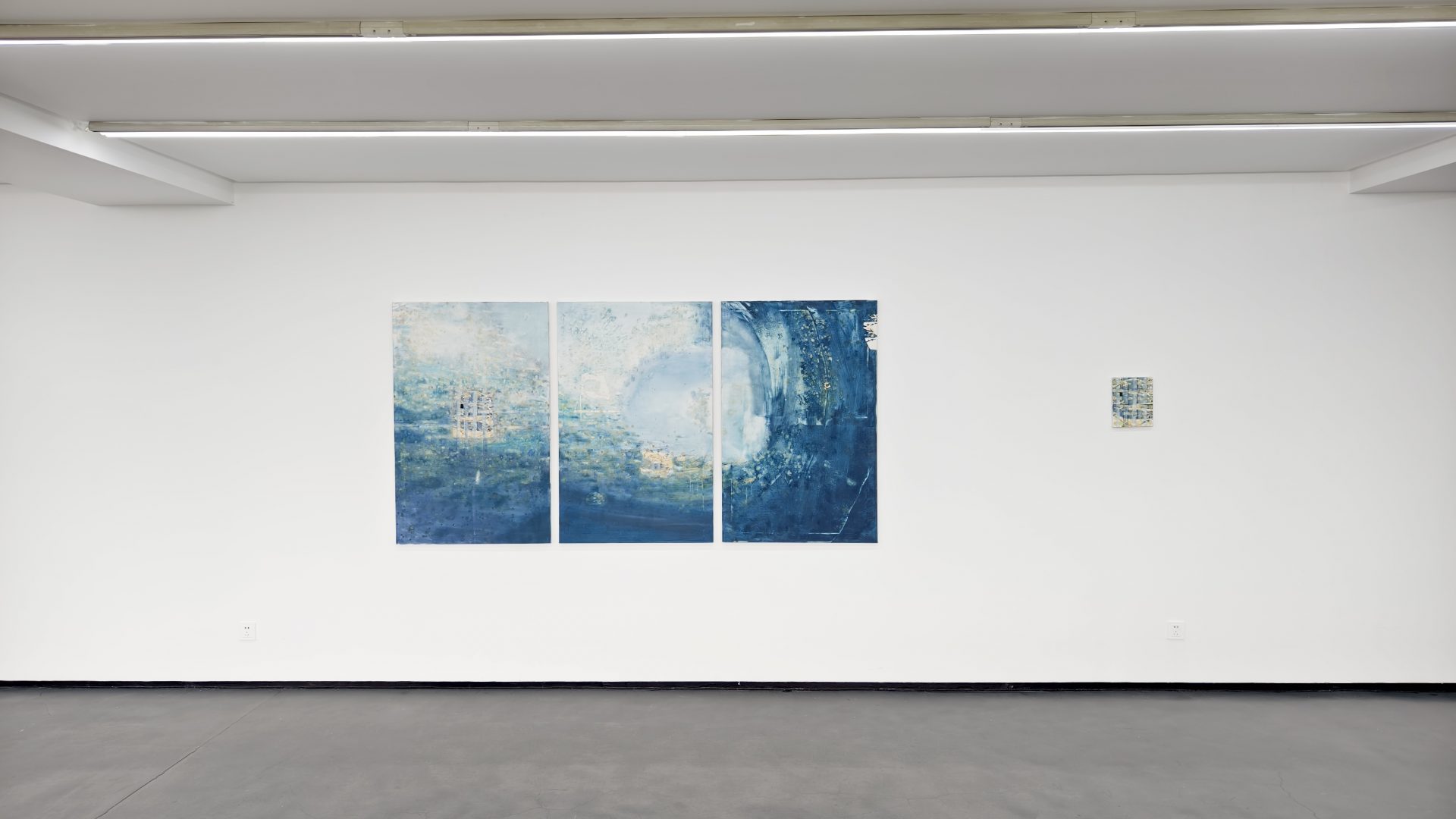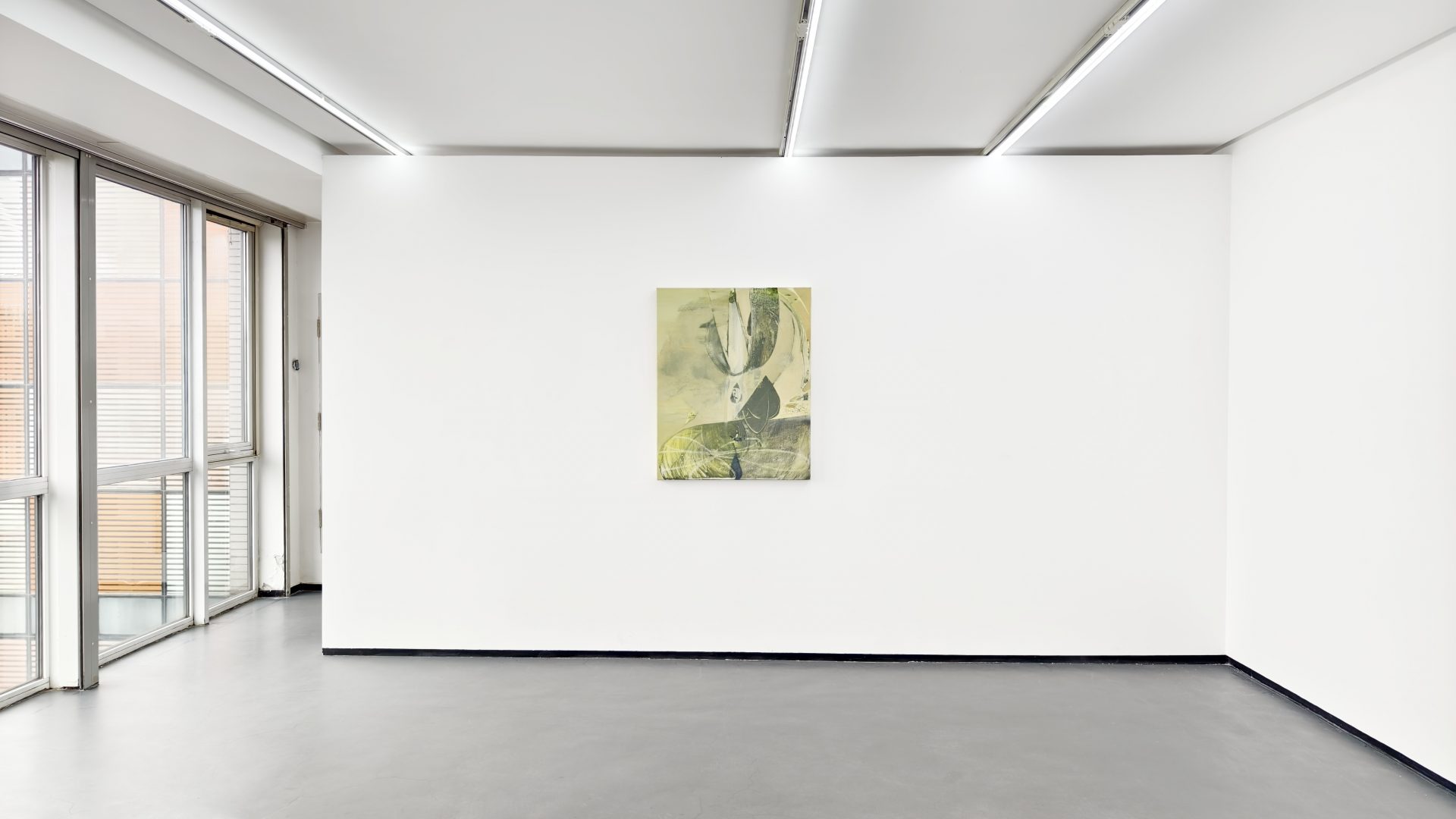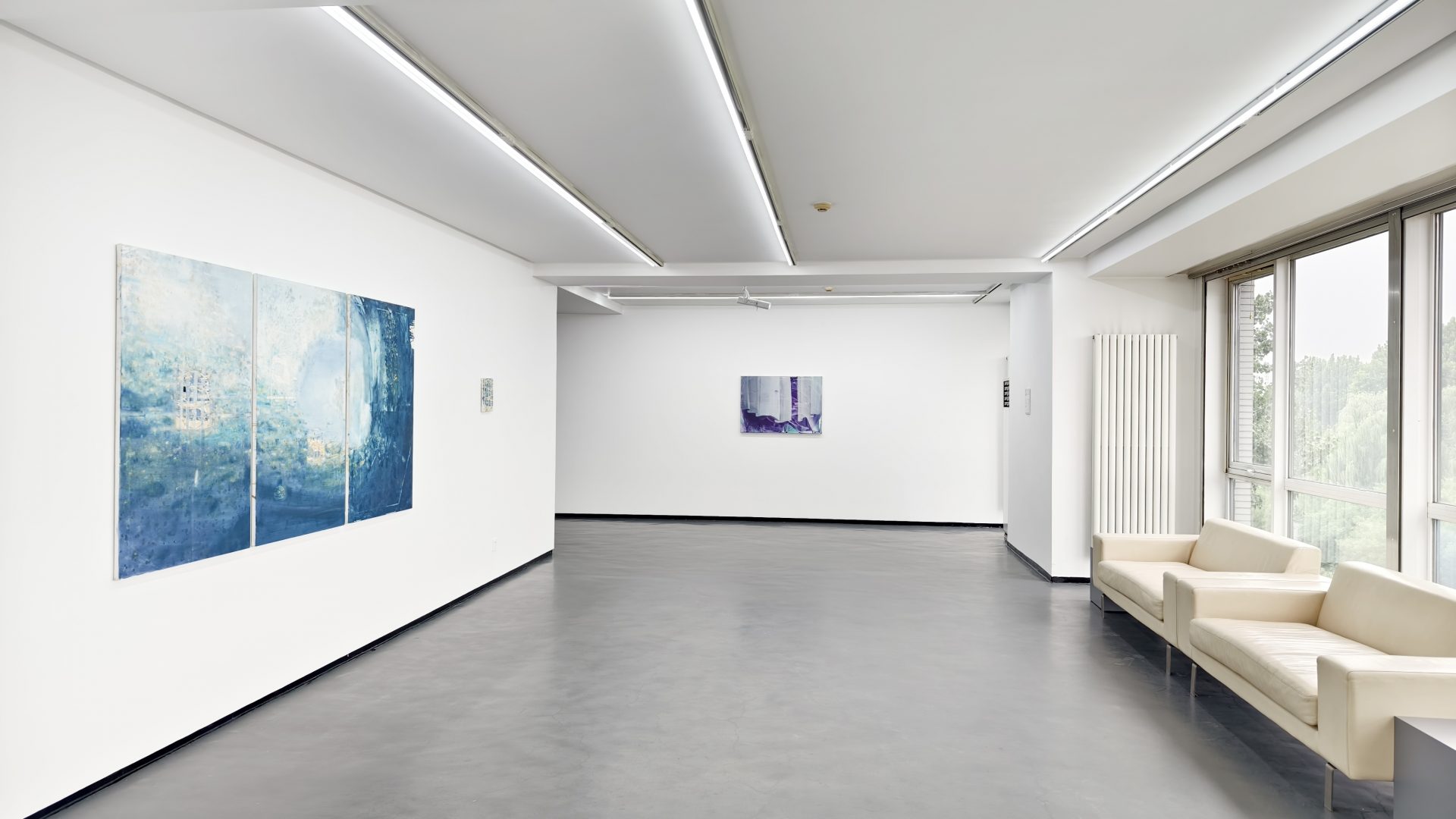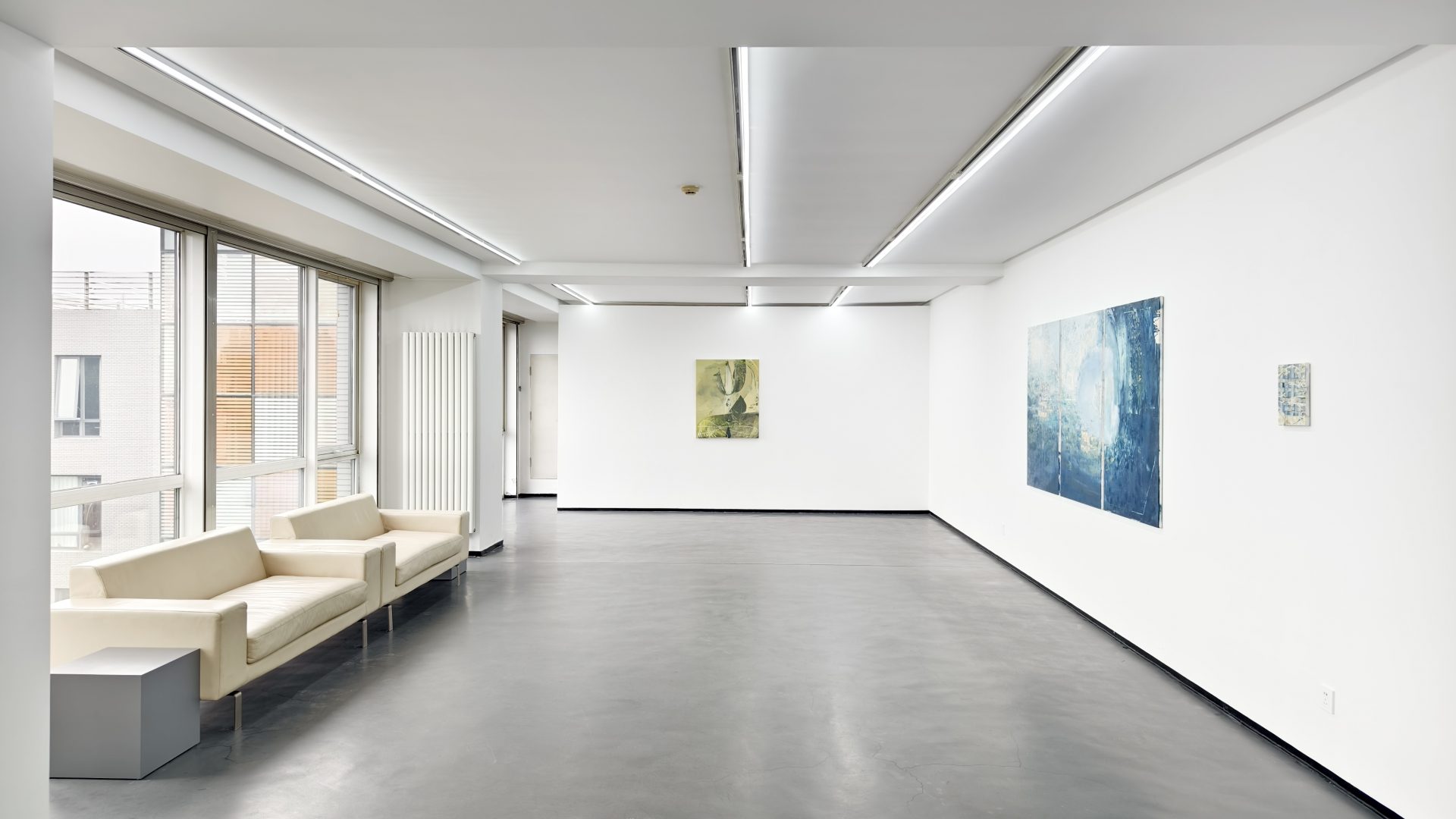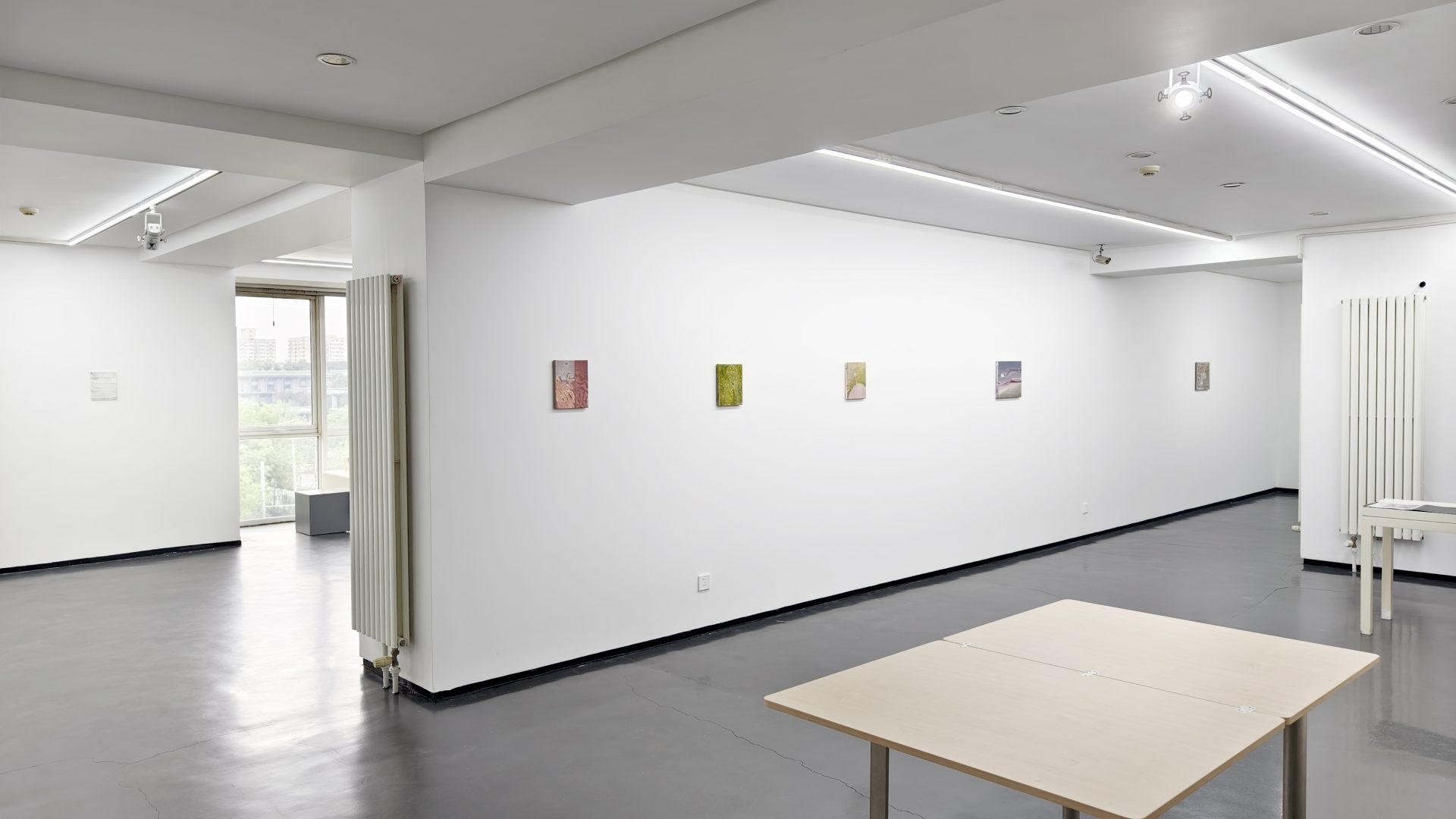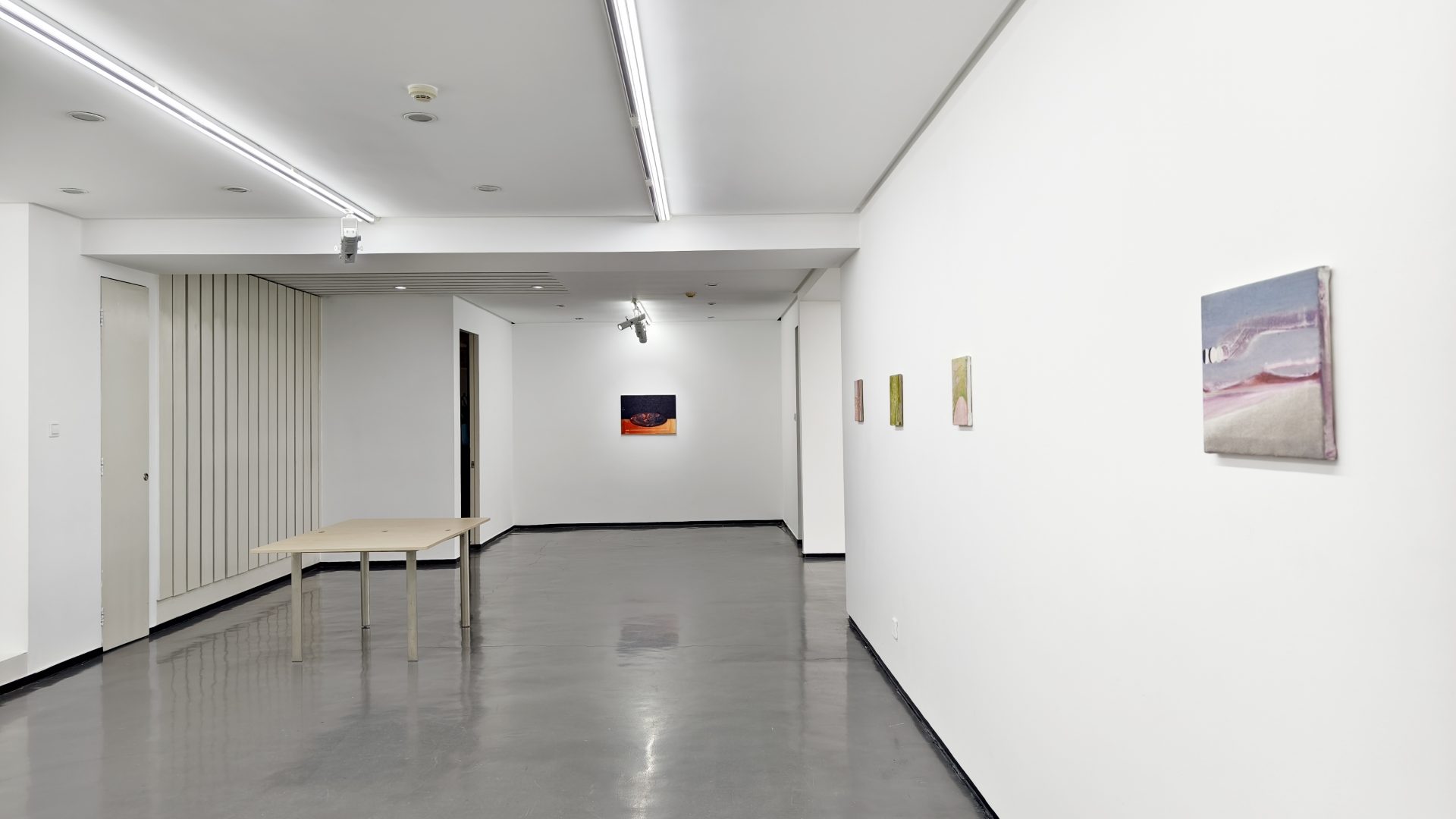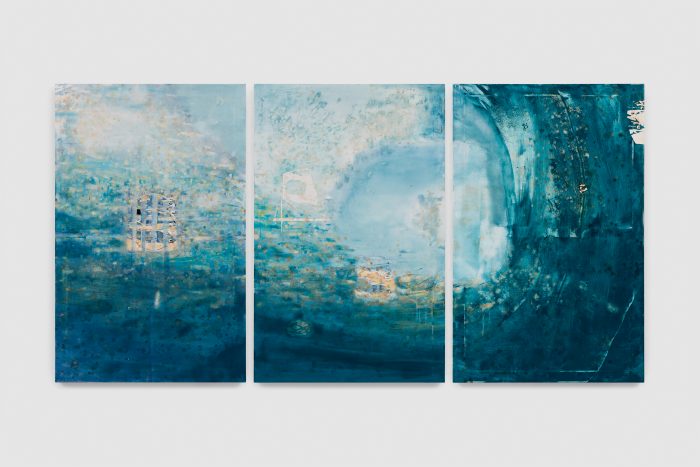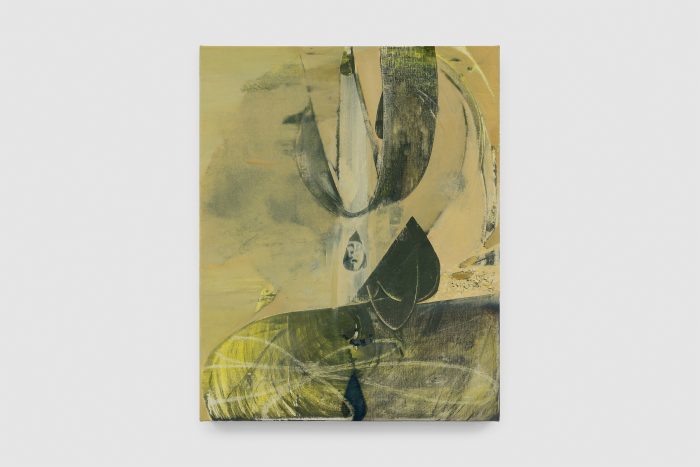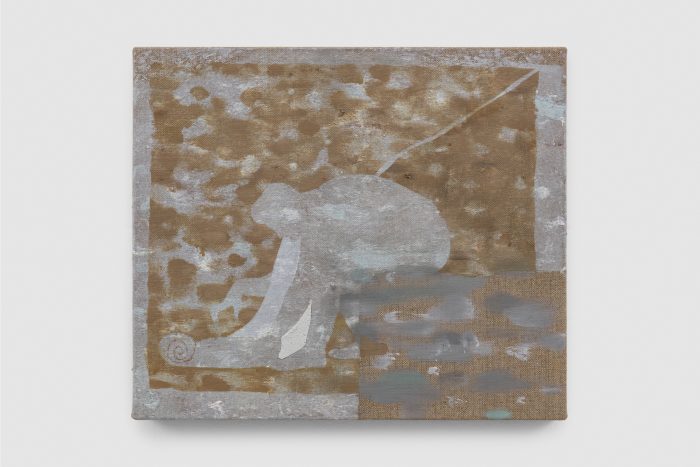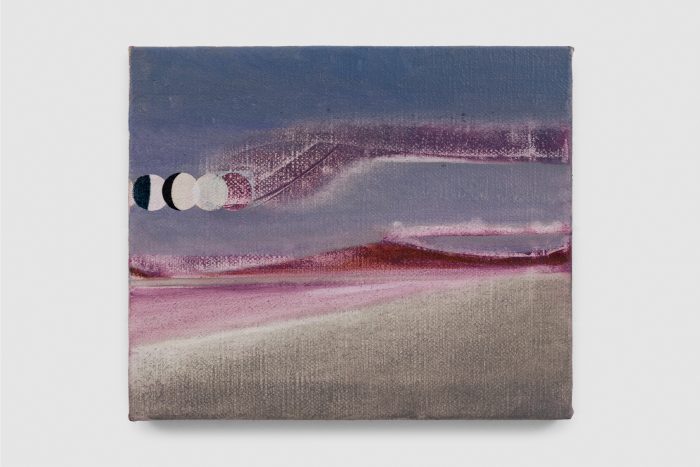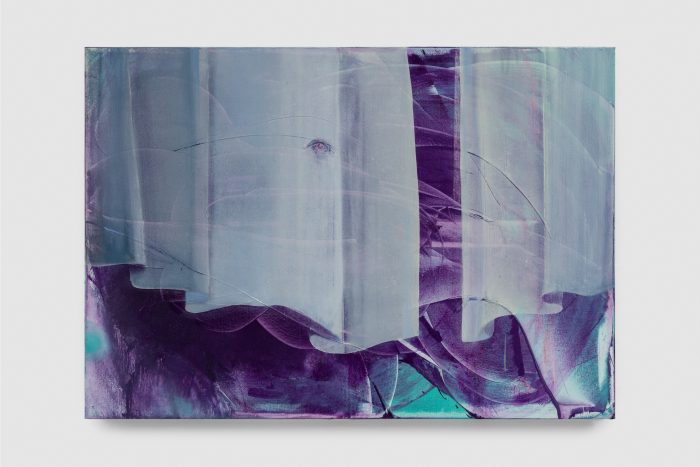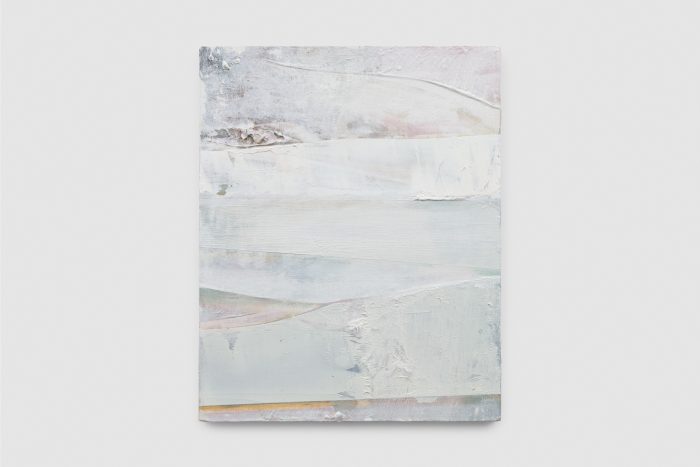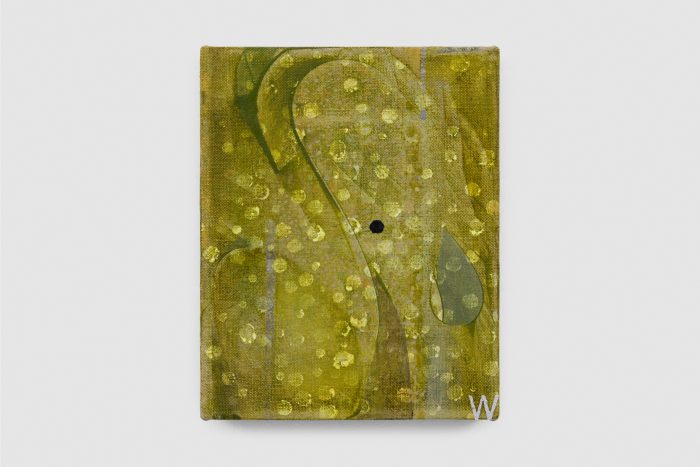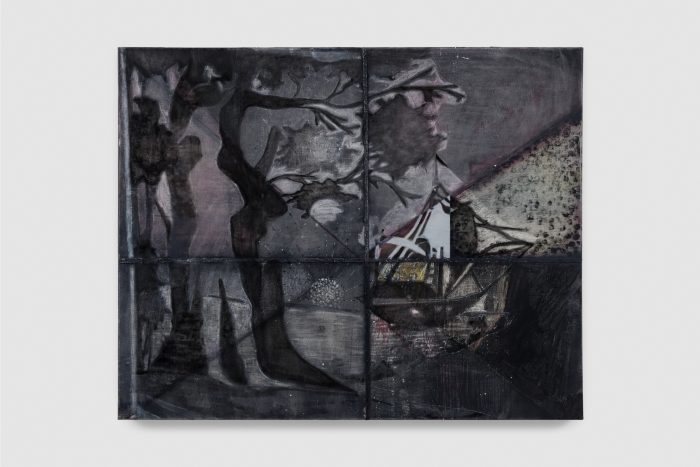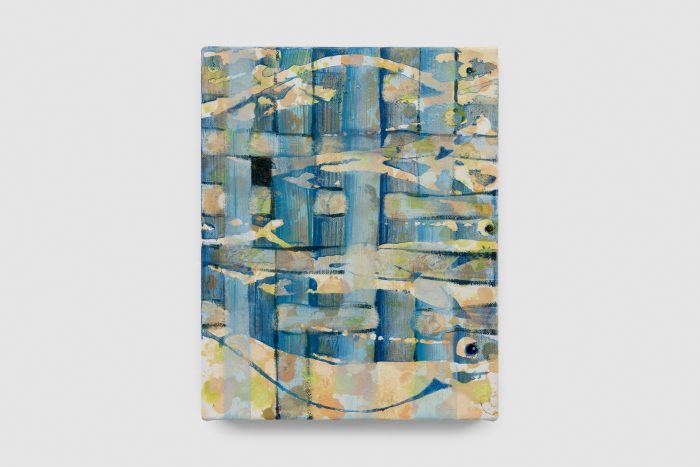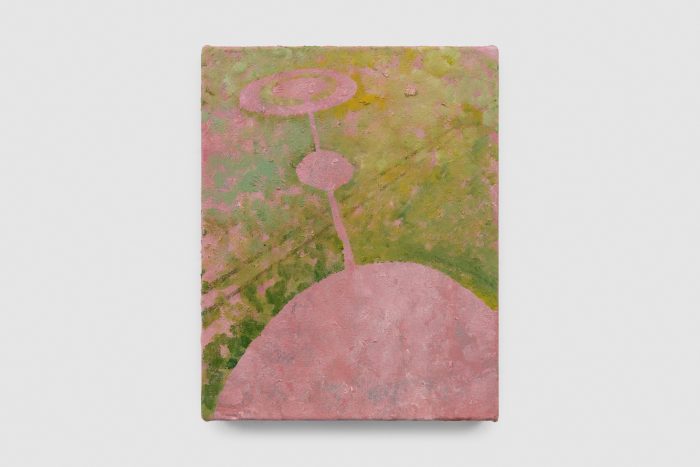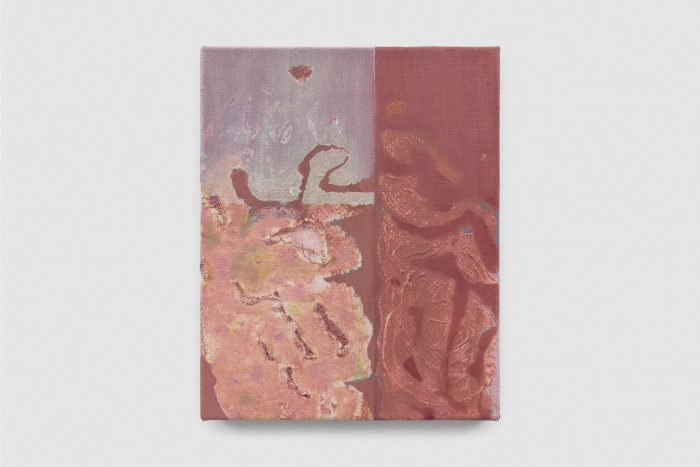Weathervane: Tobias Francis Works
2025.08.17 – 2025.09.17
Press Release
Weathervane
Once, in conversation, Tobias Francis mentioned to me offhand that his paintings do not have backgrounds; “they have beginnings.” At the time it felt like an unassuming remark, almost incidental, but since then those casual words have unfolded into a revealing designation. When a painting’s layers are understood as measures of time, the particular rhythm of each surface comes into view.
The works all begin differently. It might be a gossamer squeegee pull of vibrant oil paint that sweeps across the base of gesso, or a different translucent veil of colour from which the next step is drawn. Thicker blankets of paint are applied and then worked back, creating a tension between moments of fluid openness and deliberate masking and concealment. Instances of chance and unpredictability sit beside measured positions of order. Fine powders of mica or marble are scattered into the wet or placed into shapes, not as ornament but to affirm the very thingness of the materials. At times, the weave of the canvas pushes forward through the paint. At other junctures, the paint assumes the authority of a weave, forming slippery nets of oil and acrylic that interlink. Structures of warp and weft appear, carrying within them the record of their own making.
Within Francis’ abstractions, rare images surface like fragments of a dream or free flowing thoughts. A logo-like rendering of William Blake’s Newton (1795–c.1805) glimmers briefly; a nod to painting’s expansive histories and to its peculiar ability to hold more than the production of knowledge. The original satirises Isaac Newton’s reliance on reason and shows him measuring with paper, his focus on logic curtailing his wider understanding of the world. Francis’ suite of works reminds us that, at its most elemental, painting is the manipulation of smears on a flat surface. How strange and remarkable that these daubs become more than objects! Slipping past their material state, beyond logic, to transfigure into portals with their own distinct dynamics.
Like a weathervane turning imperceptibly in the wind, each painting responds to forces we cannot see while remaining anchored in place. They are not fixed images but points of exposure within the mutable, idiosyncratic rhythm of Francis’ process, slipping into the continuum of a practice that is always shifting. The act of rendering a moment, of isolating something fleeting, echoes quietly across the canvases, in movements so subtle they nearly escape notice, like the steady ticking of a clock or the synchronised turn of fish in water. These are not grand declarations but quiet instances of time passing, held just long enough in the material to be felt.
Alexander Harding
Instagram: @alexanderhardingg
